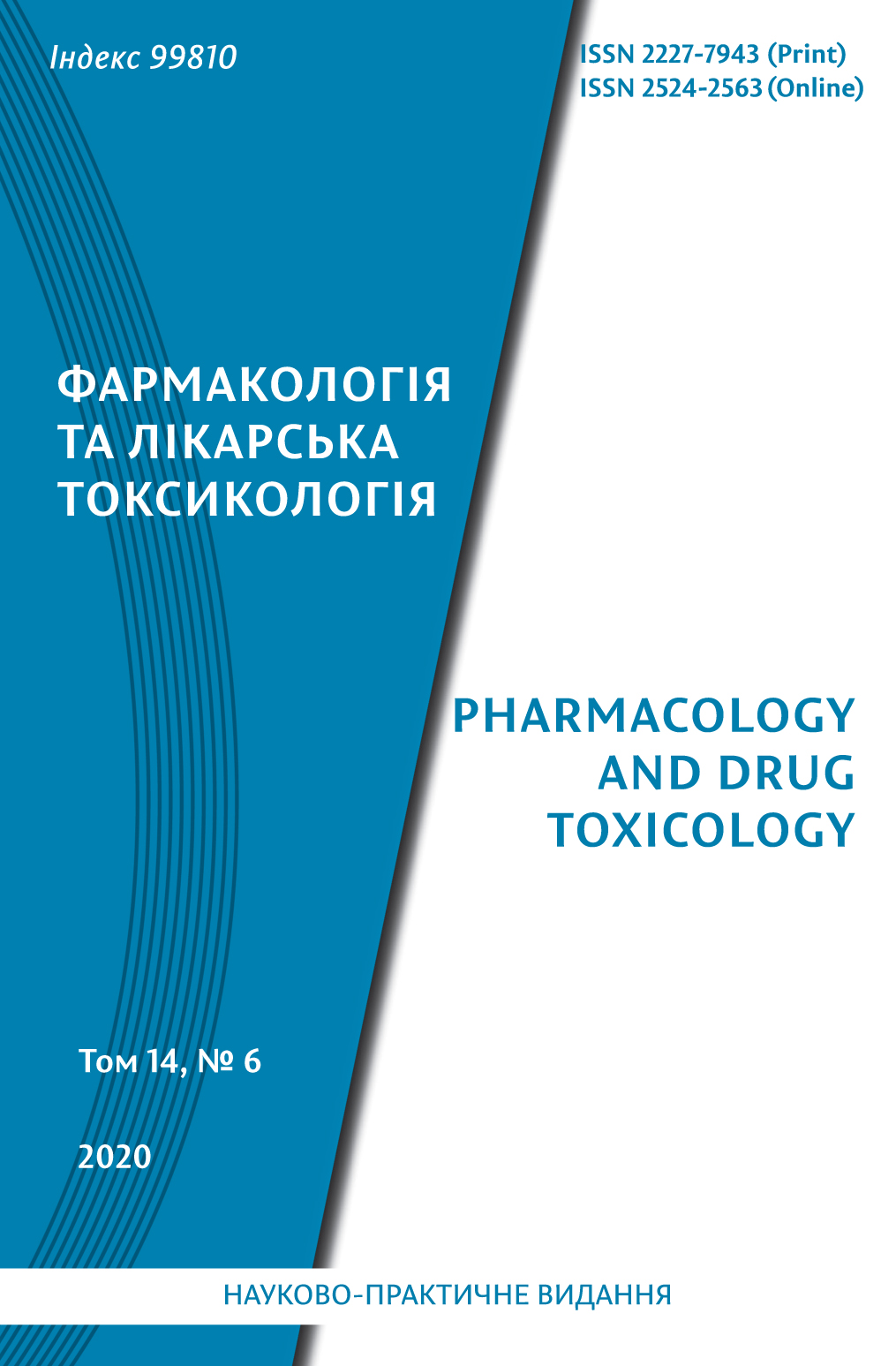Abstract
The aim was to study the range of anticonvulsant action of 5-[(Z)-(4-nitrobenzylidene)]-2-(thiazol-2-ylimino)-4-thiazolidinone in experimental models of seizures with different pathogenesis and determine acute toxicity of this compound.
The experiments were performed on 115 white nonlinear male mice weighing 18–25 g. The neurotransmitter activity profile of 5-[(Z)-(4-nitrobenzylidene)]-2-(thiazol-2-ylamino)-4-thiazolidinone was determined in seizure models induced by thiosemicarbazide, strychnine, picrotoxin, camphor and caffeine. The test compound and reference drugs were administered intragastrically 30 min before intraperitoneal (thiosemicarbazide, camphor, caffeine) or intragastric administration (strychnine, picrotoxin) of the convulsant. Acute toxicity was determined by the express method of T. V. Pastushenko.
Pharmacological analysis has showed that 5-[(Z)-(4-nitrobenzylidene)]-2-(thiazol-2-ylamino)-4-thiazolidinone demonstrates moderate activity in the strychnine seizure model, which effect is exceeded the activity of glycine. This shows the possible effect of test compound on postsynaptic glycine receptors.
It was found that 5-[(Z)-(4-nitrobenzylidene)]-2-(thiazol-2-ylamino)-4-thiazolidinone demonstrated activity in caffeine-induced seizure model at the level of specific adenosine receptor agonist inosine. The results indicate a possible mechanism affecting adenosinergic processes. In the picrotoxin seizure model,
the test compound was active at the level of sodium valproate, which may be associated with the antagonism of the blockade of the GABA receptor channel. In seizure models induced by thiosemicarbazide and camphor 5-[(Z)-(4-nitrobenzylidene)]-2-(thiazol-2-ylamino)-4-thiazolidinone had not showed anticonvulsant effect. The test compound belongs to the V class of toxicity – practically non-toxic substances, since LD50 > 5000 mg/kg.
Thus, the results obtained indicate the feasibility of further pharmacological studies of 5-[(Z)-(4-nitrobenzylidene)]-2-(thiazol-2-ylamino)-4-thiazolidinone as a promising anticonvulsant with a polytropic mechanism of action and low toxicity.
